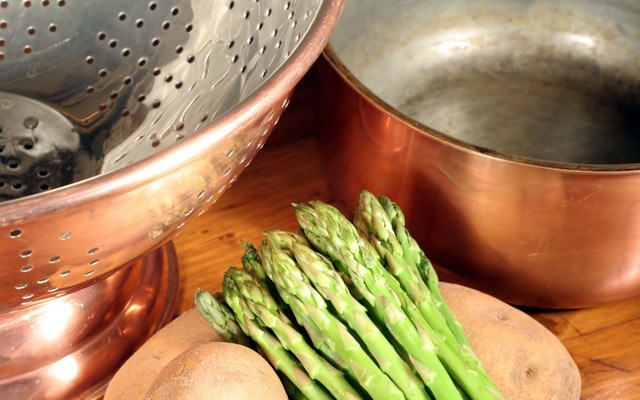When the Stephen Harper regime announced that the penny was doomed (it was Finance Minister Jim Flaherty who announced the penny would be "eliminated" as though it was about to be ignominiously shat out), I found so many coppers lying about on sidewalks, on curbsides near parking meters, on roadways and polished shop floors that I did an art project with them.
In arcane handwriting that counterpointed their perfect, controlled details and echoed a logbook from 1908, when the penny was introduced in Canada, I carefully catalogued where and when each penny I found met its end — tossed from this handbag, that handful of change, only to be honoured in my project, a final resting place for pennies.
The irony was that around the time Canada was planning its big elimination, a British hospital was proudly announcing how common infections were being virtually eliminated with the installation of copper toilet seats, taps and push plates on doors. Lab tests during the 10-week study showed that the copper fittings killed off the deadly Methicillin-resistant Staphylococcus aureus (MRSA) and C. difficile superbugs as well as the flu virus and E. coli bacteria.
The Birmingham hospital study confirmed something that people have known since ancient times — copper is one powerful antibacterial with a broad-spectrum effect against a wide range of viruses and bacteria.
The Copper Alliance, an offshoot of the International Copper Association, offers one-stop shopping for a wide range of antimicrobial copper products, from cupboard handles to basins. I say just buy yourself a big copper pot for your kitchen and handle it a lot.
Copper has been highly prized in the kitchen for centuries. It's unique, writes Harold McGee in On Food and Cooking. Because it's the only common metal found naturally in its metallic state, it was one of the first metals to be used for tools. Eventually came copper and other metal pots. No medieval kitchen was without one.
One of the biggest advances in cookery — Margaret Visser in her classic The Way We Are writes that it caused a culinary revolution — was the discovery of pottery or making earthenware vessels. The earliest found are about 20,000 years old, some 10,000 years older than the first metal tools. They came from a cave in the southeast province of Jiangxi in China.
"Vessels could now be made in whatever size and shape people liked, and in them we could heat water and keep it boiling while we cooked our food in it." Options opened up: Meats and veggies could be served together or separately, with or without the broths they were cooked in. Metal just pushed things along, something in cooking not really replicated until the advent of the microwave.
"We like to congratulate ourselves on the accelerating pace of modern technological change; but since the invention of earthenware, nothing else we have devised to cook with has had such an enriching effect, and none, until the microwave, opened up the possibility of any genuinely new method of cooking," writes historian Felipe Fernández-Armesto in Near a Thousand Tables.
Take that, Shopping Channel. Oops, but wait a sec before you flip the remote. They do have a nice selection of copper pots and pans.
Of course, just the outside of it will be copper, which is highly valued by cooks for its unmatched conductivity. Want a pot or pan that heats fast? Buy a copper one, or at least one with a copper bottom.
Your copper pot is going to be lined with another metal, likely stainless steel these days. For despite the wonder of copper's antibacterial properties, and the way a copper bowl lets you whip up the best meringue ever (the copper ions interact with the egg-white proteins, so your meringue doesn't get all dry and grainy), we humans have a hard time with it if we ingest too much of it.
People can only eliminate so much copper so excessive intake might give you gastro problems or worse. But whipping up a little meringue once in a while in a copper bowl won't harm you. Nor will copper water pipes, which many a scientist and strata council still argue for when it's time to replace them in your aging Alpine Meadows condo.
Your copper pot isn't going to be cheap, though. The very conductivity that makes copper so valued in the kitchen also puts it in high demand for things like electrical conductors and circuits.
Thinking about all things coppery, it's pretty cool that what was once the biggest copper mine in the British Empire during the 1920s-30s is located just down the road from Whistler.
Britannia Mine was active for about 70 years, pumping out over 50 million tons of ore containing copper (650,000 tons of that alone) and other metals — zinc, lead, cadmium, silver and gold. During peak production, the mill processed 7,000 tons of ore a day. However, production had fallen way below that when Anaconda Copper finally closed it in 1974, putting an end to an operation that employed 60,000 people over the years.
But you can stop for a guided tour of the mine any day of the week. Bonus: On Sept. 11 the mining museum will host its annual Copper & Fire Arts Event featuring artists from across B.C. who use "mined materials of the Earth" in their projects.
I bet none will have a penny catalogue art project, but you never know. You can at least take along a few coppers to buy something with. They're still legal tender in Canada, and you'll be giving everyone who touches them the gift of good health.
Glenda Bartosh is an award-winning journalist who still keeps a few pennies in her wallet.




